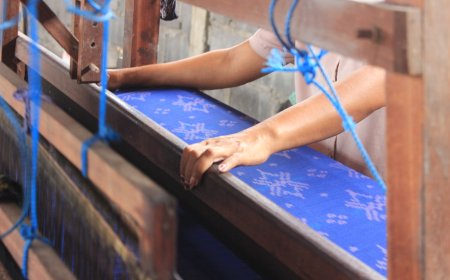The Charm of Bone Craftsmanship Tampaksiring Gianyar: An Enchanting Touch of Art
One area that holds a unique allure in the realm of craftsmanship is Tampaksiring, a district in Gianyar Regency. Besides being famous for Tirta Empul Temple and the Presidential Palace, Tampaksiring has its own distinctive charm through its captivating bone craftsmanship. This craft is not merely a work of art but also a cultural heritage with high aesthetic value.
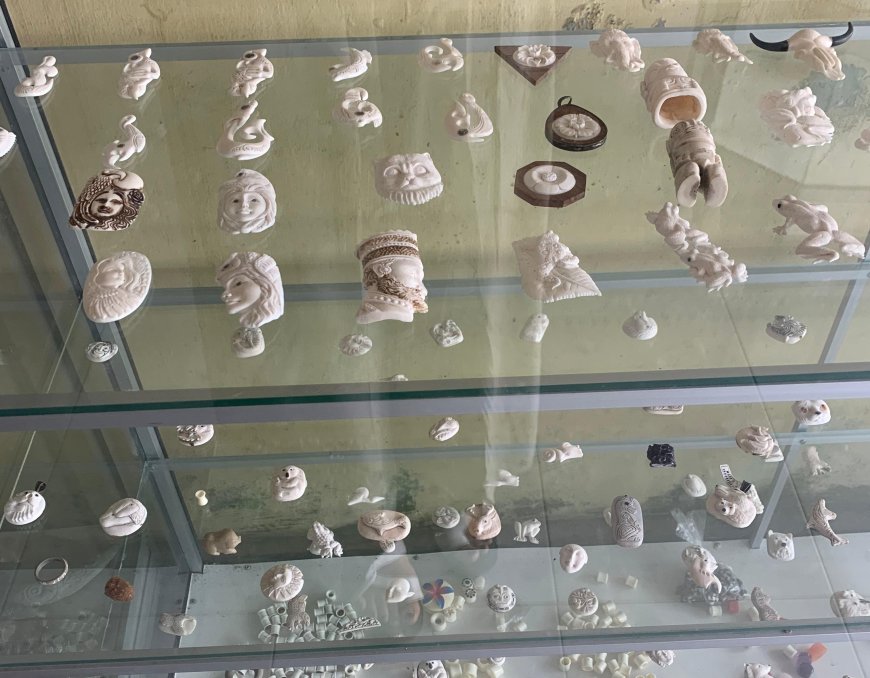
Bone craftsmanship in Tampaksiring is not a new phenomenon. This art has been around for decades, passed down through generations by local artisans. Initially, the community used animal bones, such as buffalo and cow bones, which were then crafted into jewelry and wall decorations.
Over time, the materials were not limited to livestock bones but also included smaller fish bones for more varied designs. This craftsmanship was born from the local community's desire to transform bone waste into beautiful and valuable works of art. With a touch of creativity, artisans in Tampaksiring have been able to turn materials that might be considered worthless into mesmerizing pieces of art.
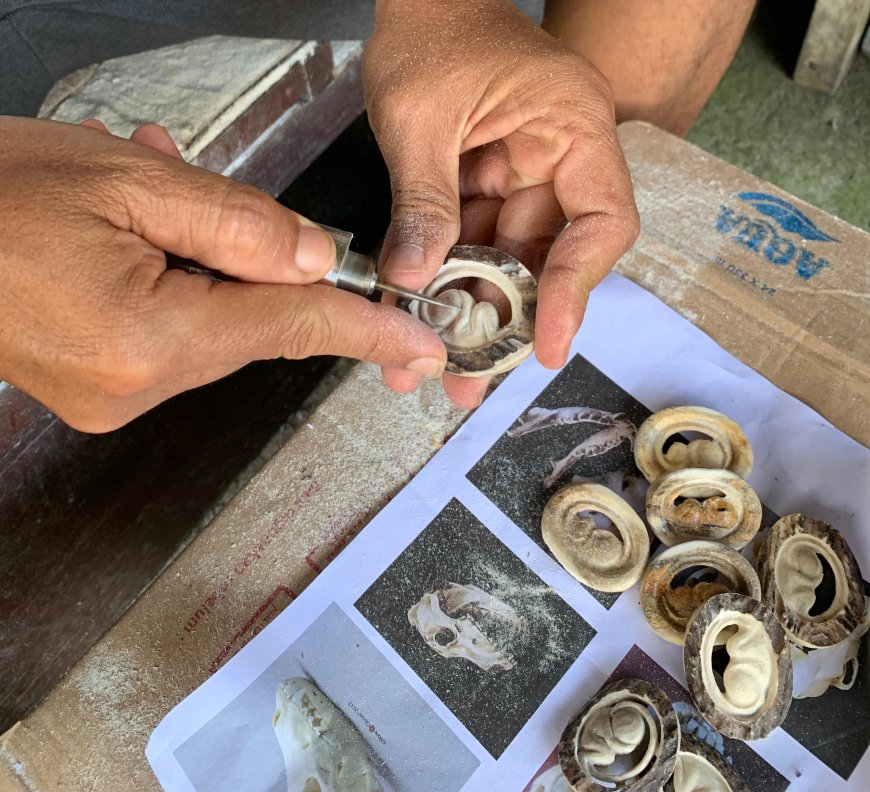
Bone Craftsmanship Process (Photo Source : Private Collection)
Each bone craft undergoes a meticulous and time-consuming process. The first step is selecting the bones to be crafted. Artisans must ensure that the bones chosen are in good condition and not brittle. Afterward, the bones are thoroughly cleaned and dried.
The next step involves cutting and shaping the bones according to the desired design. This is the most crucial stage and requires a high level of precision, as even a small mistake could ruin the entire design. Artisans then use both traditional and modern tools to carve various motifs, such as classic Balinese carvings, natural motifs, and contemporary patterns.
Once the carving is complete, the piece is smoothed and polished to create a refined finish. Some artisans also add natural dyes to enhance the artistic impression of their work.
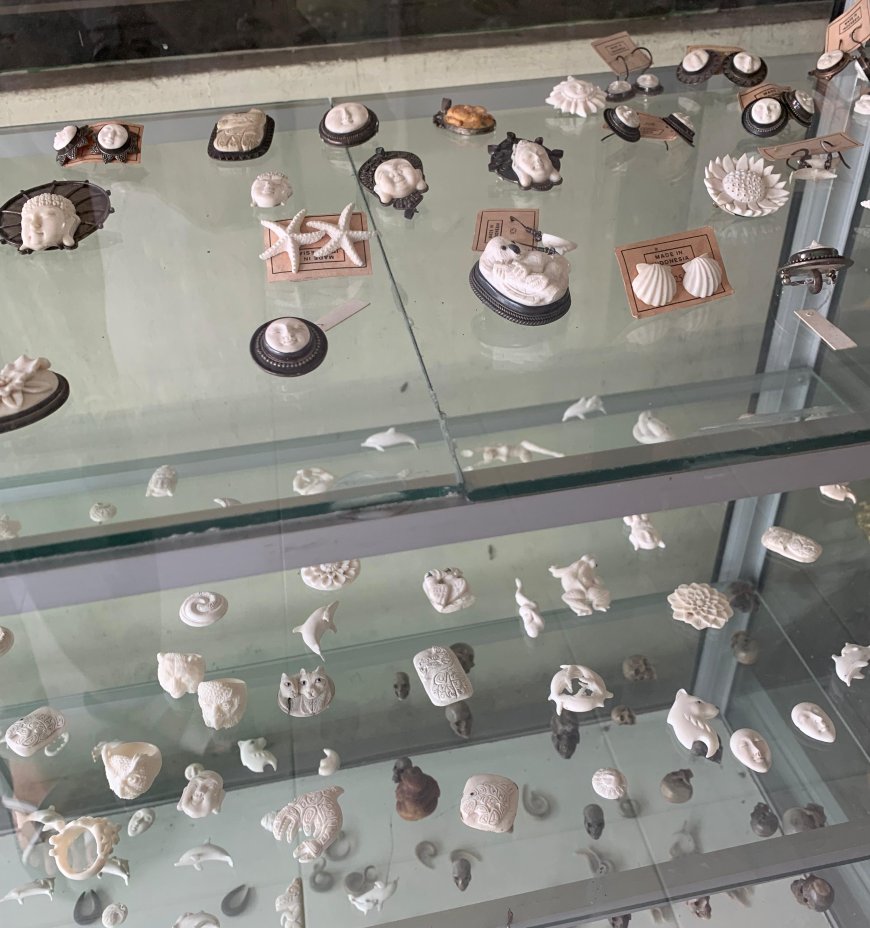
Varieties of Bone Craft Products (Source: Private Collection)
Bone craftsmanship from Tampaksiring encompasses a wide range of products, from jewelry like necklaces, bracelets, and earrings, to home decorations such as mini statues, keychains, and wall hangings. Each product has its own uniqueness, as no two pieces are exactly alike. Artisans often give a personal touch to each work, making it more special and exclusive.
Additionally, some artisans take custom orders from tourists or art collectors who wish to have pieces tailored to their specific desires. This adds to the appeal of bone craftsmanship from Tampaksiring among art enthusiasts, both local and international.
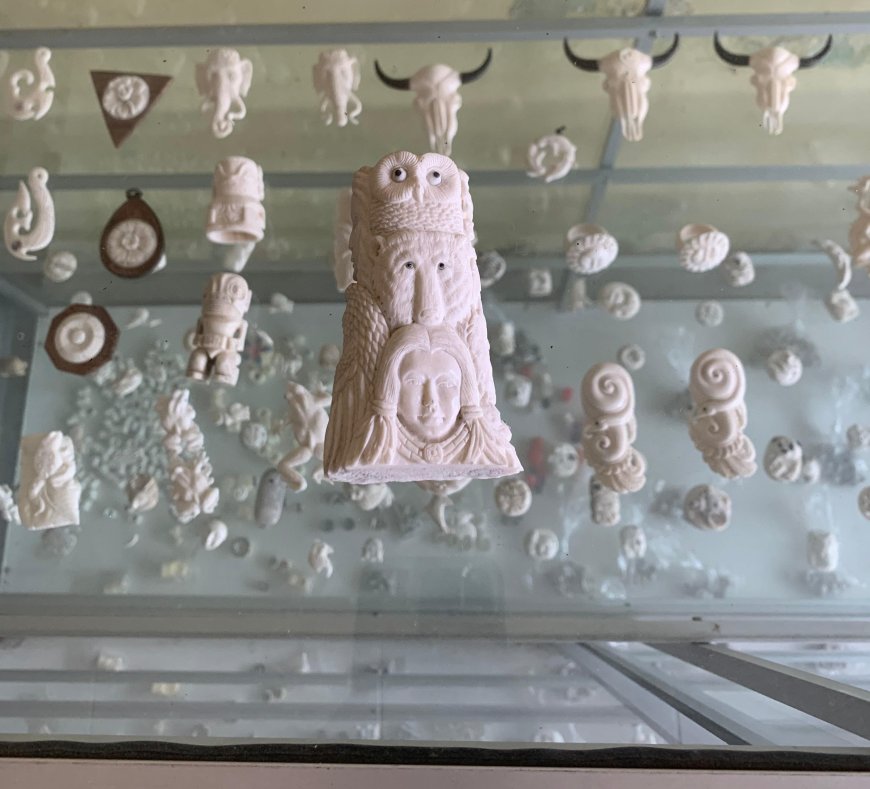
One of the Bone Craft Products (Photo Source : Private Collection)
Bone craftsmanship from Tampaksiring is not only visually stunning but also rich in philosophical meaning. The carved motifs often reflect the daily life of the Balinese people, their surrounding nature, and their spiritual beliefs. Some of the frequently found motifs include floral carvings, fauna, and spiritual symbols that represent the balance between humans, nature, and the divine. Through each carving, artisans aim to convey a message about the importance of maintaining harmony and preserving the environment. By utilizing bone waste, this craftsmanship also becomes a manifestation of sustainability and environmental preservation.
Bone craftsmanship from Tampaksiring Gianyar not only reflects the beauty of Balinese art but also serves as evidence of the cultural richness and creativity of the local community. With its high aesthetic value and meaningful production process, each bone craft carries its own allure. This enchanting artistic touch makes the bone craftsmanship from Tampaksiring one of the cultural heritages that deserves to be continuously preserved and cherished.


















































